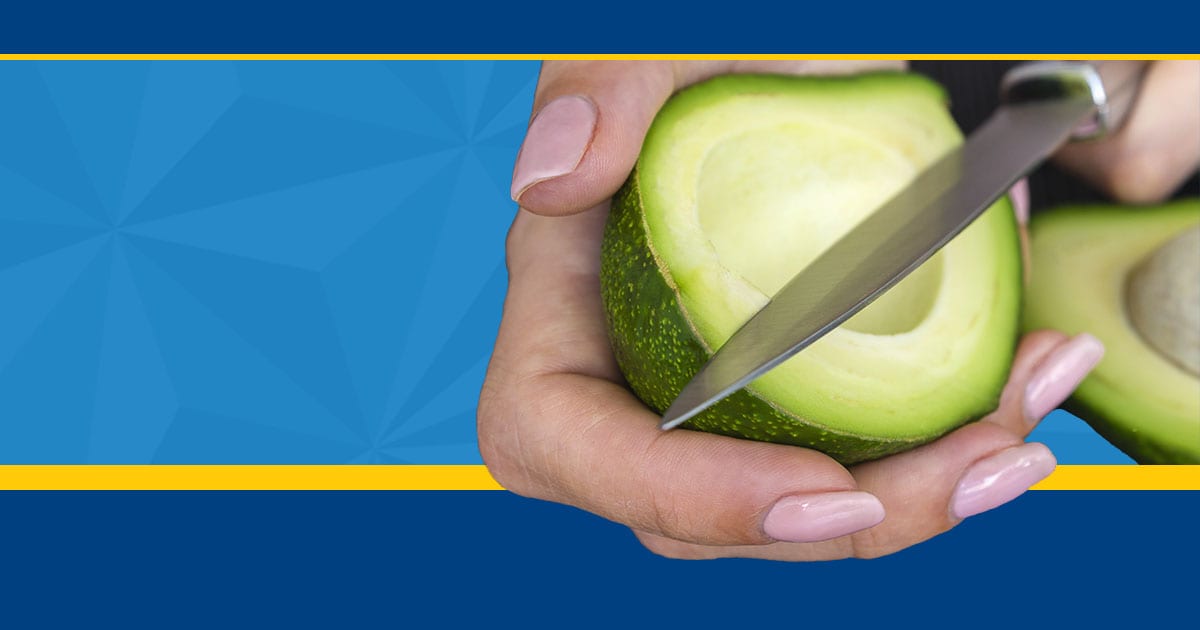
Avocado hand is a real medical condition
Avocados are the new ‘it” food. Whether served on a swanky slice of avocado toast, or as a staple in vegan, gluten free or keto diets, it seems avocados can do no wrong. However, doctor’s offices are reporting an increase in hand injuries as a result of incorrectly cutting avocados. In fact, it’s so common the injury has earned its own name--avocado hand.
In today’s post, Dr. Brandon Donnelly will discuss how mishandling avocados is becoming a growing risk for home and professional cooks and what to do if it happens to you.
How can avocados be dangerous?
By design, avocados have leathery skin, soft flesh, and a rock-hard seed in the middle. Slicing these unusual, but delicious, fruit can be surprisingly tricky. If you push the knife in too hard, or at the wrong angle, you can cut your hand.
Anyone from a kitchen newbie to professional kitchen staff is at risk. Avocado hand injuries range from blade grazes to serious gashes that can damage nerves, muscle and tendons.
How to prevent avocado hand
Safety in the kitchen, whether at work or at home, is key. Dr. Donnelly says that of the patients he treats for kitchen wounds, “the main cause is from stabbing the avocado pit with a sharp knife.” There are safe methods of cutting an avocado, according to the Haas Avocado Board. Here are some tips to prevent knife injuries in the kitchen:

There are also plastic tools specifically designed to safely remove the pit and cut the avocado from its peel.
"If you’ve treated the injury yourself, but it hasn’t improved within a week, you should come in for an evaluation."Brandon P. Donnelly, MD
When to seek help for a wound to the hand?
If you have a minor or shallow cut, clean and bandage the cut. However, if the cut is deeper, you should immediately wash the cut gently with soap and water. Apply pressure to the cut in order to stop the bleeding. If the edges of the cut are smooth and stay together, a bandage is likely sufficient to treat it.
Dr. Donnelly says that you should seek medical attention if any of the following conditions are present:
Dr. Donnelly suggests, ”if you’ve treated the injury yourself, but it hasn’t improved within a week, you should come in to have your hand looked at.”
Treatment options
Treatment options depend on how severe the injury is. If the cut is deep, you may need stitches or surgery to repair any damaged muscles or tendons. Dr. Donnelly offers options for repairing hand injuries including Wide Awake Local Anesthesia No Tourniquet (WALANT) surgery. Hand surgery almost always requires physical therapy, says Dr. Donnelly. But he adds, “the prognosis is good for full recovery and range of motion.”
Don’t ignore hand injuries
If you seriously injure your fingers or hand, you may need to see a hand specialist. Contact Dr. Donnelly’s office to have your injury evaluated, so you can return to safely working in the kitchen again.
This site is not intended to and does not provide medical advice, professional diagnosis, opinion, treatment or services to you or to any other individual. Through this website and links to other websites, Brandon P. Donnelly, MD provides general information for educational purposes only. The content provided in this website and links, is not a substitute for medical care or treatment. You should not use this information in place of a consultation or the advice of your healthcare provider. Brandon P. Donnelly, MD is not liable or responsible for any advice, course of treatment, diagnosis or any other information, services or product you obtain through this site.

